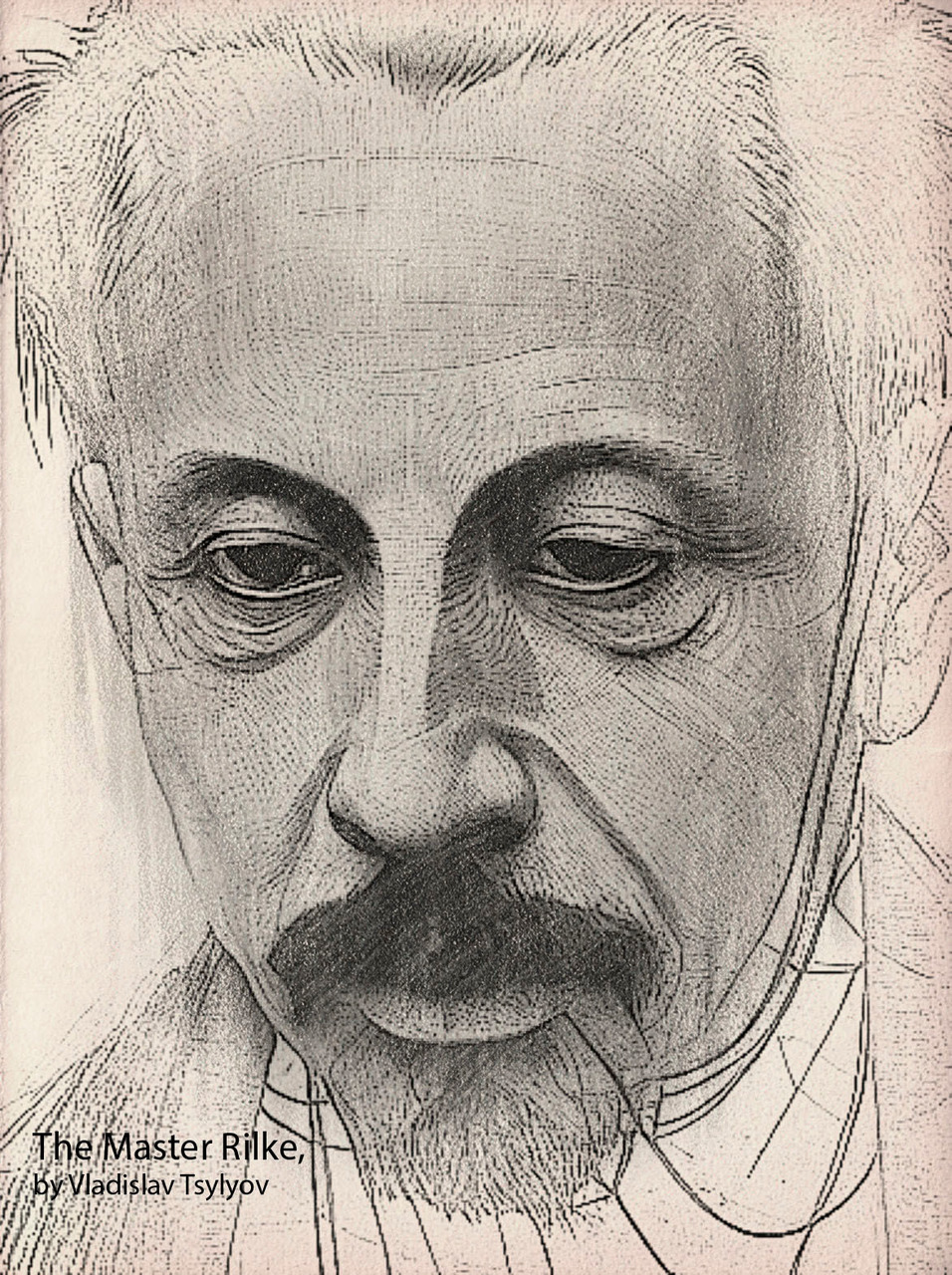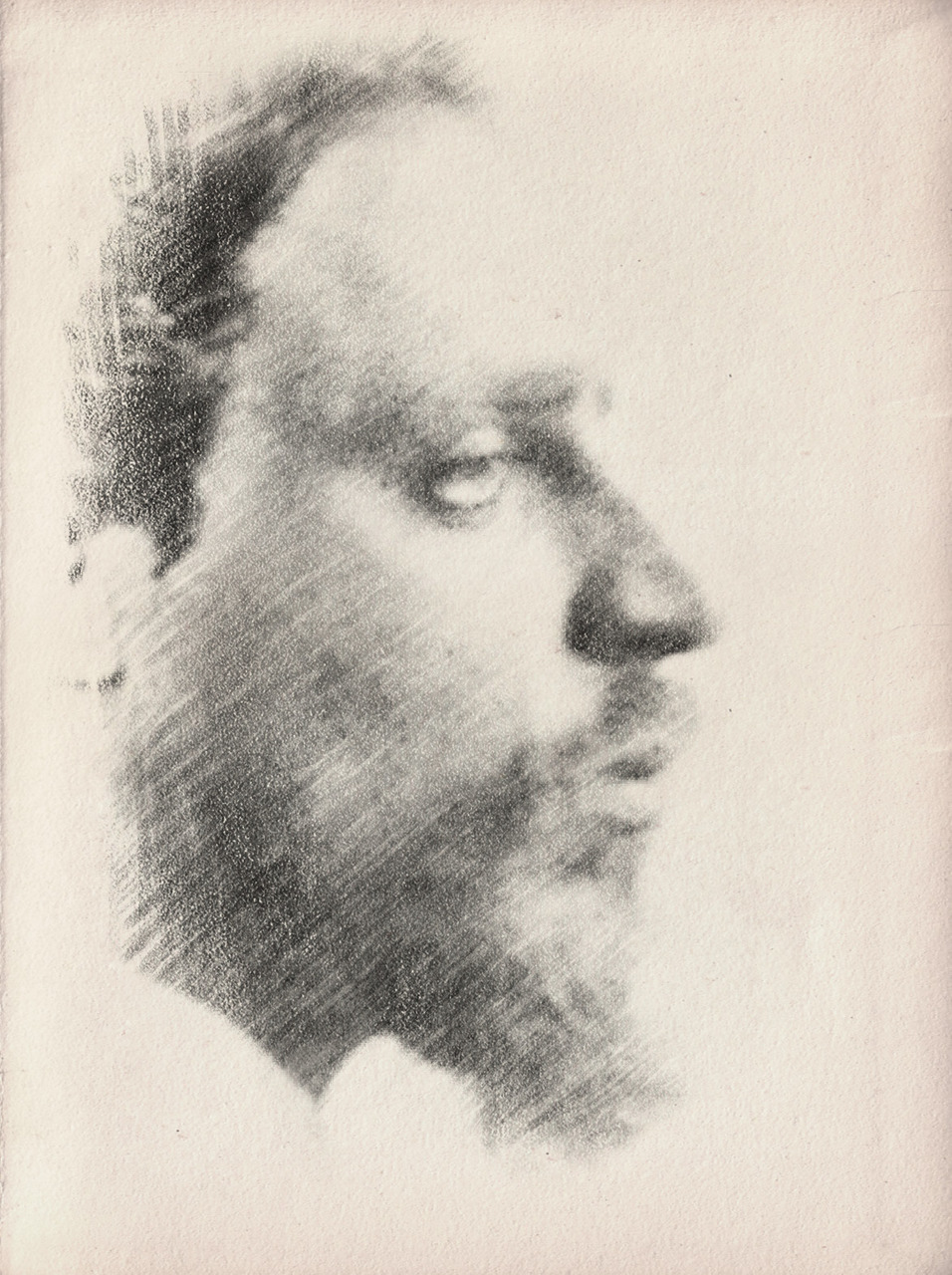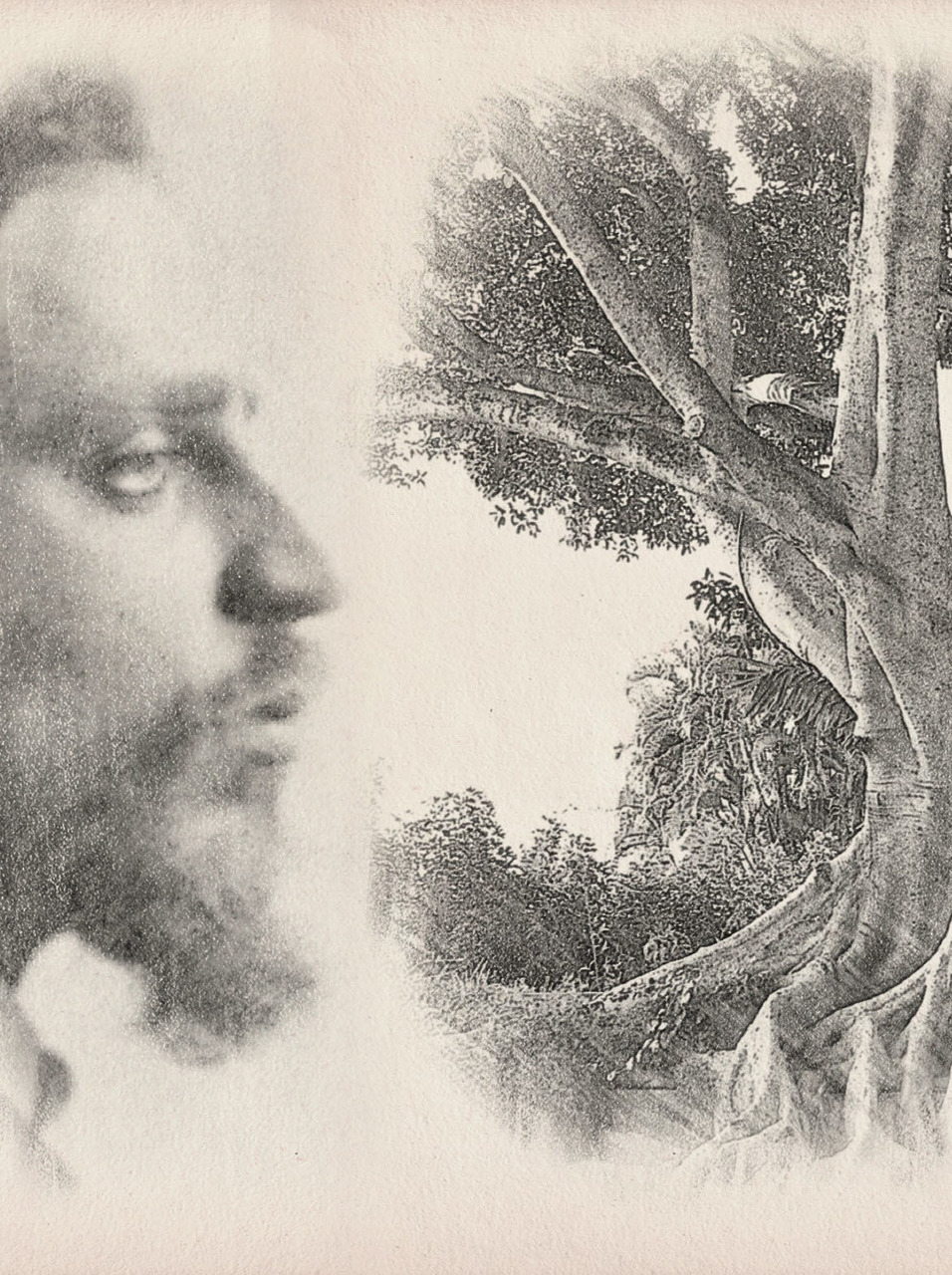
Бесплатный фрагмент - Zen Master Rilke: We Are the Bees of the Invisible
Dialogues with Gautama Buddha
A holy man changes the curses of karma* into blessings.
— Gautama Buddha

Mysteries Adorned with Love
A Few Words About The Buddha-Rilke Booklet Series
The proposed small book continues my series of booklets in English under the general title Buddha-Rilke.
Despite the much-vaunted title of the series, in which I have attempted to present some of Rilke’s views in the context of Buddha’s teachings (including in the form of speculative dialogues between the poet and the Blessed One or his successor, an unnamed Patriarch of the Chan School), these extraordinary historical figures, while expressing their judgements, in no way comment on, interpret or assert anything for the edification or ´development´ of each other. In other words, they don’t try to follow a predetermined plot, lest they find themselves
´attached to an art-thing, like an animal to a tree´.
In the words of Maeterlinck, quoted by Rilke in his famous collection ´Worpswede´,
´Progress [the development of a plot] is not at all necessary for a play to inspire us. A riddle is enough…´
It was a fascinating riddle or mystery like this that inspired me throughout the series of booklets as I imagined these two seemingly disparate figures, Buddha and Rilke. The mystery of the spiritual connection between Buddha and Rilke, which I have tried to unravel again and again, is what I want to pass on to the reader.

Indeed, it would be a great mistake to think that it is possible to find words for even the smallest part of that realm of the Ineffable into which the enlightened minds of these two penetrating Teachers of Life were undoubtedly initiated, or to touch with thought the sources of their insights. And certainly we should not hope that in at least one of their ´profound´ dialogues, which may even seem quite unexpected or ´advanced´ to the reader, a glimmer of Truth will suddenly appear. It’s unlikely that my modest introductions and comments on the dialogues will shed any more light on them.
Truth is everywhere, but it cannot be caught in the net of words. For its abode is beyond the boundaries of meaning, for it lurks beneath the cloak of Mystery. The only thing the reader can do is to try to peer into this mysterious ´beyond´ for himself, to lift the veil that the great artist leads him to, and finally, like a true artist, to come to the obvious conclusion: a clue does not lie in the glitter of noble names or in the sublime pathos of meanings. The best way to have an epiphany is to leave the Mystery intact.
That’s why, according to Rilke,
´...an artist seems to be even above a wise man. Where the latter strives to solve riddles, the artist has an even greater task, or, if you like, an even greater right´.
So what ´task´ is Rilke talking about, and what ´right´ is he referring to? In the above-mentioned collection, the poet, speaking of art and the artist’s task, gives us a chastely clear answer:
´The work of the artist is to love the mystery. That is all art: love poured over mysteries — and that is all works of art: mysteries surrounded, adorned, showered with love´.
As the author and compiler of The Buddha-Rilke Series, I hope that in each book of the series the reader will discover more of the exciting mysteries that Buddha and Rilke have prepared for him, mysteries surrounded and adorned with love; and that each of these books in his hands will unfold not as an insoluble challenge to reason, but as a fascinating invitation to yet another unsolved face of the Mystery.
*
The books from the Buddha-Rilke series
Featured on Amazon.com, Litres.ru, Wildberries.ru
Zen Master Rilke: Seeing It All As a Whole, 2023.
Zen Master Rilke: There Are No Teachings, 2023.
Zen Master Rilke: The Gatha of the Idiot Who Plays Ball, 2023.
*
Author’s Notes on the Booklet
All illustrations in the booklet have been created by me from public domain images, including photographs taken no later than the early twentieth century.
The plot of the following Dialogues is a product of my imagination.
The poet´s statements are based on fragments of R.M. Rilke’s letter to Witold von Hulewicz dated 13 November 1925. All quotations are in my translation.
All of Gautama Buddha´s sayings are taken from a book that was very popular in Europe at the beginning of the last century. Incidentally, this book has survived more than twelve editions! The book in question is The Gospel of Buddha, written by Paul Carus (1852—1919), a brilliant populariser of Buddhism, religious scholar and philosopher. All quotations from this book retain the grammatical features of the original. The full text of The Gospel of Buddha is in the Gutenberg Library.
Speech marks have been removed from the Dialogues to make the text easier to read.
The Dialogues as well as the Reference Section of the booklet are illustrated with graphic works by Olga Kopezky (1870—1928), a remarkable Czech artist. The works were created for the magnificent jubilee edition of The Gospel of Buddha. All images are from the Gutenberg Library.
We Are the Bees of the Invisable

´Isn’t it your dream to be invisible?´
Let all then here perform good deeds,
For future weal a treasure store…
— Gautama Buddha
In 1922, at the height of his creative powers, Rilke completed his epochal ´Duino Elegies´ and wrote the equally impressive ´Sonnets to Orpheus´ (hereafter the Elegies and the Sonnets). After ten years of silence, linked to the events of the First World War and to bouts of severe depression that periodically overwhelmed the poet, Rilke finally presented to the world the result of his long and intense spiritual quest — two undoubted masterpieces, two outstanding cycles of poetry, each of which can rightly be considered one of the greatest poetic revelations of the twentieth century.
If we talk about the peculiarities of the Elegies, they are characterised, first of all, by the innovative metaphysics of the universe and the human soul, by the author´s original ´decoding´ of the symbolism of angels and salvation. For this reason, the understanding of the Elegies, which did not fit in with the usual Christian ideas, caused (and still causes) considerable difficulties for translators and philosophers.
In his letter to the Polish translator Witold von Gulewicz (hereafter the Letter), who had asked the poet for clarification, Rilke outlined a concise yet impressive interpretation of his Elegies — perhaps the best available today. To do this, he had to write a new artistic work within the epistolary genre — a small essay which, together with the Elegies and the Sonnets, formed a unique and inseparable artistic whole — a lyrical and philosophical triad. At the very beginning of the letter, however, Rilke stated that the true meaning of the Elegies was still inscrutable to him, for the Elegies were infinitely beyond his understanding.
The imaginary dialogues between the poet and the Buddha offered to the reader in this etude may seem like yet another attempt to interpret the Elegies. However, the main point in this dialogue (as in all the others) is not to achieve an ´understanding´ of Rilke’s lyrical revelations, but to search for the ´unprecedented unity´ of the views of the poet and the Buddha, who do not try to justify or prove anything to each other. For the knowledge that each of them possesses is universal in nature and needs no explanation: it lies in the incomprehensible, beyond words and concepts.
Nevertheless, in order to be better prepared to read the Dialogues, it is worth knowing a little more about the three essential elements of the poetic cosmos of the Elegies:
Man, Angels and the Invisible.
• The Invisible
Only through ignorance and delusion do men indulge in the dream that their souls are separate and self-existent entities.
— Gautama Buddha
First of all, in attempting to answer the eternal question of the primary basis of human existence in his Elegies, Rilke introduces a very important and difficult to understand category into his philosophical vocabulary — the Invisible (´Unsichtbares´). This word will certainly mislead the reader who is not familiar with the texts of the Letters and the Elegies. Indeed, at first glance, based only on the meaning of the word itself, it may seem that it denotes only a relative, limited category, referring to something otherworldly, non-existent, which can be contrasted with something visible, existing. In other words, the Invisible belongs to the world of opposites known as Samsara*. However, as we shall see from the text of the Letter, the author of the Elegies endowed the Invisible with much more meaning, going beyond the usual notions of life and death, of the earthly and the hereafter. According to Rilke, the Invisible is ´a vast unity´, ´a true life´, a supreme existence that encompasses ´this world and the other´. The Invisible is absolutely real. Naturally, the Invisible is also present in the Sonnets. The poet even invented a special word for this category — ´Doppelbereich´ (´double realm´, ´both this light and the other´).
Бесплатный фрагмент закончился.
Купите книгу, чтобы продолжить чтение.
